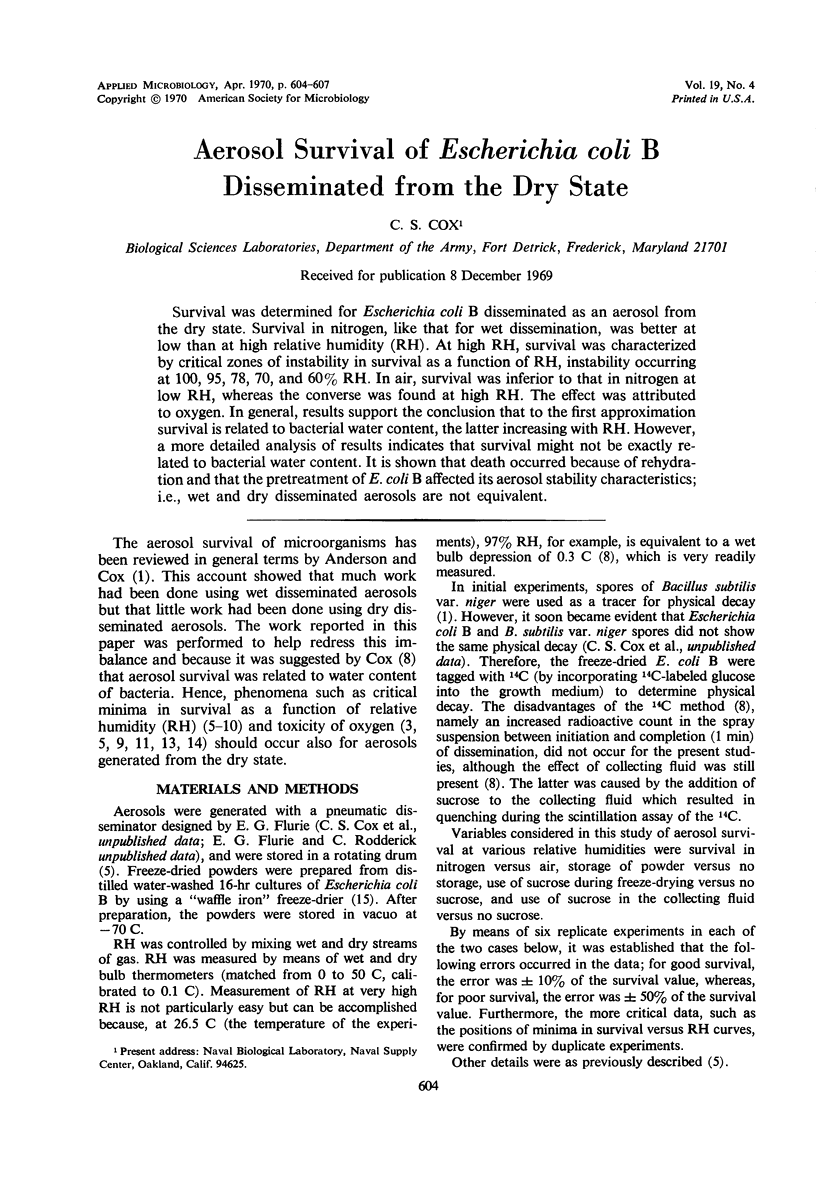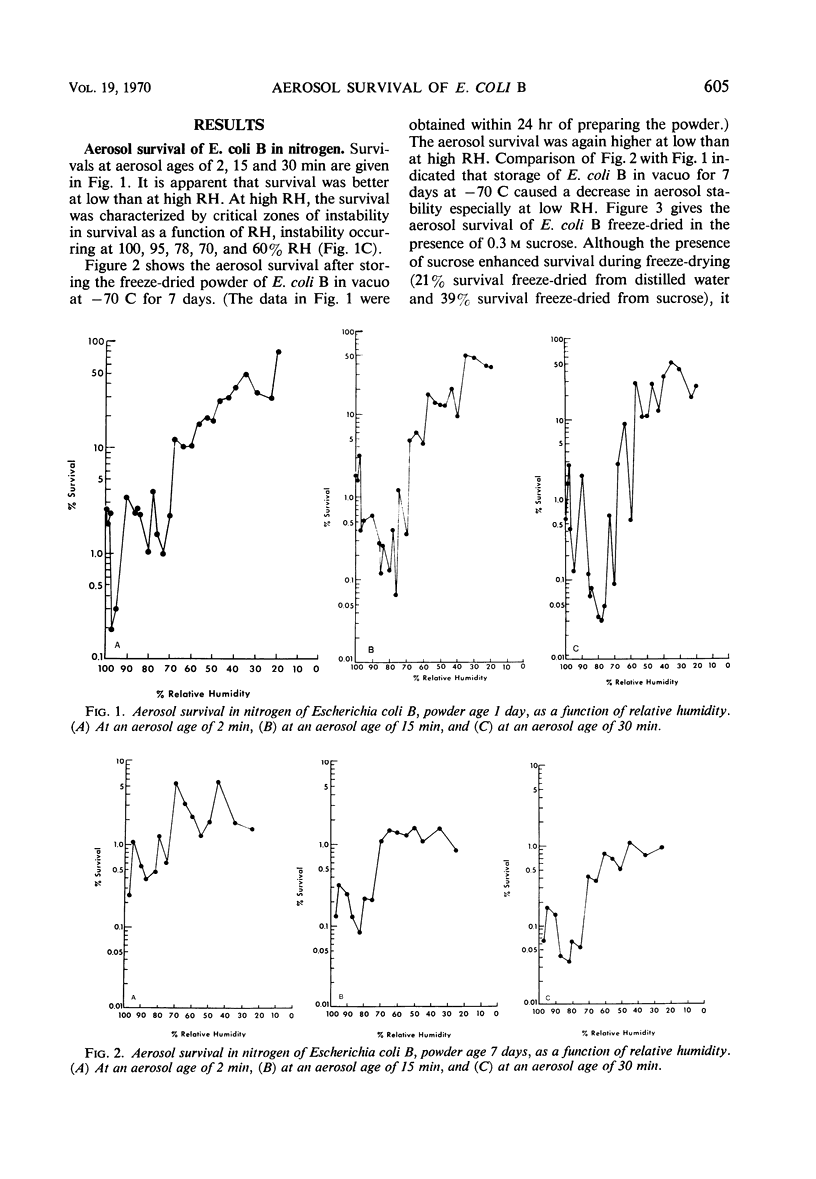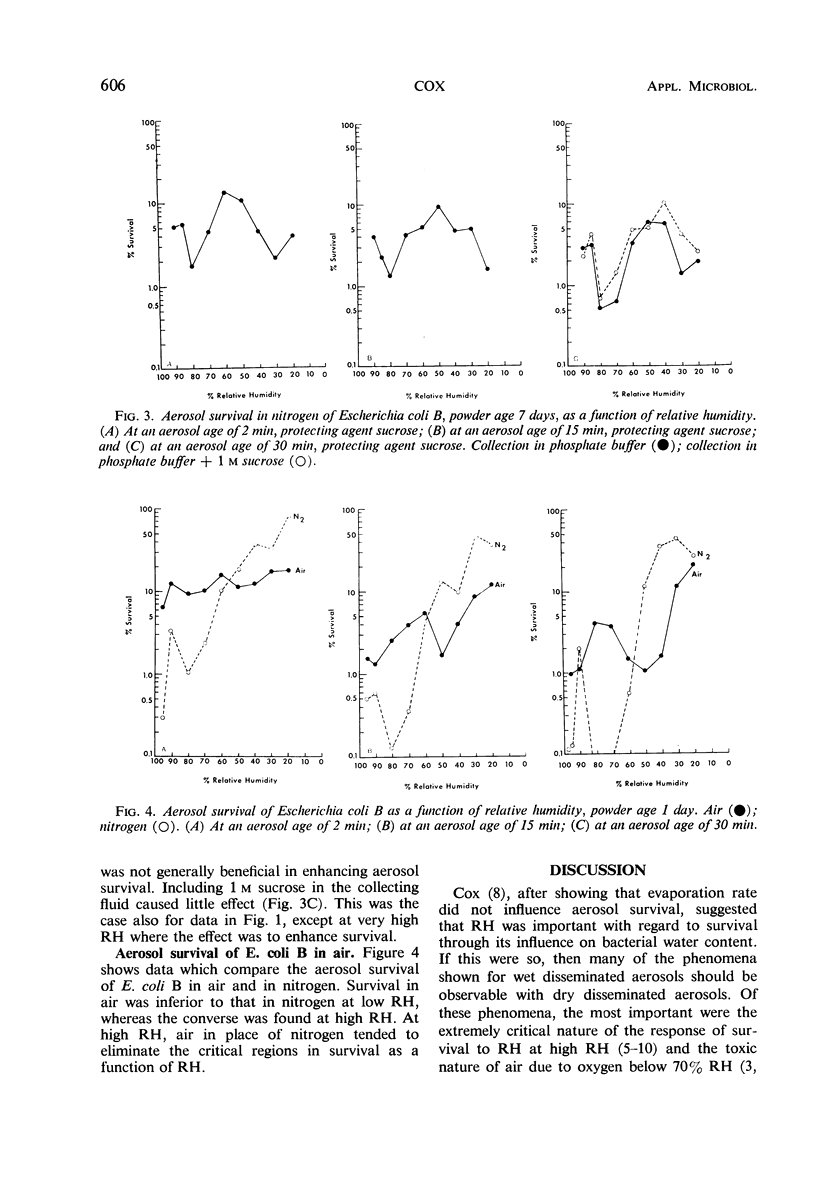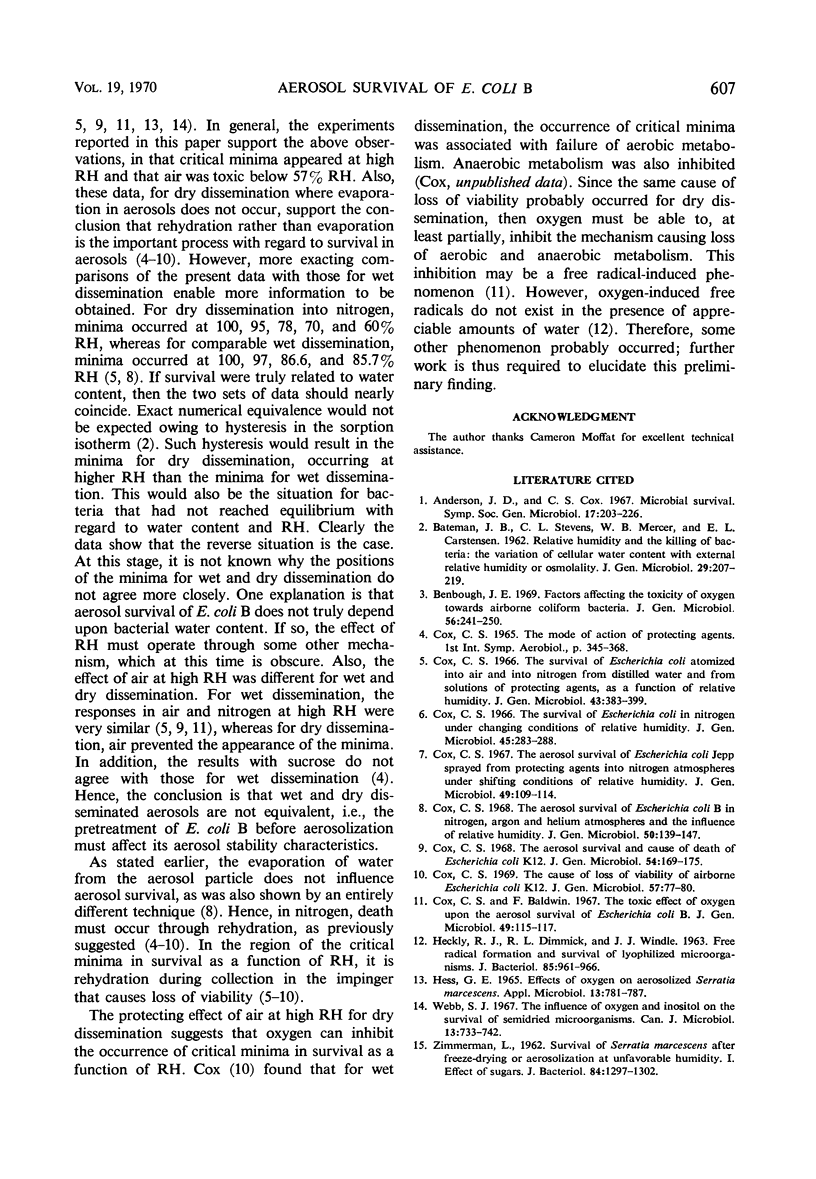Abstract
Survival was determined for Escherichia coli B disseminated as an aerosol from the dry state. Survival in nitrogen, like that for wet dissemination, was better at low than at high relative humidity (RH). At high RH, survival was characterized by critical zones of instability in survival as a function of RH, instability occurring at 100, 95, 78, 70, and 60% RH. In air, survival was inferior to that in nitrogen at low RH, whereas the converse was found at high RH. The effect was attributed to oxygen. In general, results support the conclusion that to the first approximation survival is related to bacterial water content, the latter increasing with RH. However, a more detailed analysis of results indicates that survival might not be exactly related to bacterial water content. It is shown that death occurred because of rehydration and that the pretreatment of E. coli B affected its aerosol stability characteristics; i.e., wet and dry disseminated aerosols are not equivalent.
Full text
PDF



Selected References
These references are in PubMed. This may not be the complete list of references from this article.
- BATEMAN J. B., STEVENS C. L., MERCER W. B., CARSTENSEN E. L. Relative humidity and the killing of bacteria: the variation of cellular water content with external relative humidity or osmolality. J Gen Microbiol. 1962 Oct;29:207–219. doi: 10.1099/00221287-29-2-207. [DOI] [PubMed] [Google Scholar]
- Benbough J. E. Factors affecting the toxicity of oxygen towards airborne coliform bacteria. J Gen Microbiol. 1969 May;56(2):241–250. doi: 10.1099/00221287-56-2-241. [DOI] [PubMed] [Google Scholar]
- Cox C. S., Baldwin F. The toxic effect of oxygen upon the aerosol survival of Escherichia coli B. J Gen Microbiol. 1967 Oct;49(1):115–117. doi: 10.1099/00221287-49-1-115. [DOI] [PubMed] [Google Scholar]
- Cox C. S. The aerosol survival and cause of death of Escherichia coli K12. J Gen Microbiol. 1968 Dec;54(2):169–175. doi: 10.1099/00221287-54-2-169. [DOI] [PubMed] [Google Scholar]
- Cox C. S. The aerosol survival of Escherichia coli B in nitrogen, argon and helium atmospheres and the influence of relative humidity. J Gen Microbiol. 1968 Jan;50(1):139–147. doi: 10.1099/00221287-50-1-139. [DOI] [PubMed] [Google Scholar]
- Cox C. S. The aerosol survival of Escherichia coli JEPP sprayed from protecting agents into nitrogen atmospheres under changing relative humidity conditions. J Gen Microbiol. 1967 Oct;49(1):109–114. doi: 10.1099/00221287-49-1-109. [DOI] [PubMed] [Google Scholar]
- Cox C. S. The cause of loss of viability of airborne Escherichia coli K12. J Gen Microbiol. 1969 Jul;57(1):77–80. doi: 10.1099/00221287-57-1-77. [DOI] [PubMed] [Google Scholar]
- Cox C. S. The survival of Escherichia coli in nitrogen atmospheres under changing conditions of relative humidity. J Gen Microbiol. 1966 Nov;45(2):283–288. doi: 10.1099/00221287-45-2-283. [DOI] [PubMed] [Google Scholar]
- Cox C. S. The survival of Escherichia coli sprayed into air and into nitrogen from distilled water and from solutions of protecting agents, as a function of relative humidity. J Gen Microbiol. 1966 Jun;43(3):383–399. doi: 10.1099/00221287-43-3-383. [DOI] [PubMed] [Google Scholar]
- HECKLY R. J., DIMMICK R. L., WINDLE J. J. FREE RADICAL FORMATION AND SURVIVAL OF LYOPHILIZED MICROORGANISMS. J Bacteriol. 1963 May;85:961–966. doi: 10.1128/jb.85.5.961-966.1963. [DOI] [PMC free article] [PubMed] [Google Scholar]
- Hess G. E. Effects of oxygen on aerosolized Serratia marcescens. Appl Microbiol. 1965 Sep;13(5):781–787. doi: 10.1128/am.13.5.781-787.1965. [DOI] [PMC free article] [PubMed] [Google Scholar]
- Webb S. J. The influence of oxygen and inositol on the survival of semidried microorganisms. Can J Microbiol. 1967 Jul;13(7):733–742. doi: 10.1139/m67-097. [DOI] [PubMed] [Google Scholar]
- ZIMMERMAN L. Survival of Serratia marcescens after freeze-drying or aerosolization at unfavorable humidity. I. Effects of sugars. J Bacteriol. 1962 Dec;84:1297–1302. doi: 10.1128/jb.84.6.1297-1302.1962. [DOI] [PMC free article] [PubMed] [Google Scholar]


